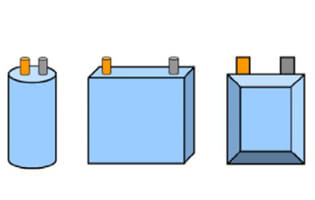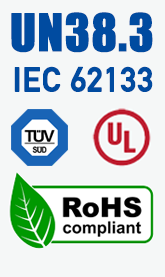
Lead-Acid Battery
There are three main types of battery in the cars, Lead-Acid battery, NiMH battery, and a lithium-ion battery. For electric cars, the lithium-ion battery is much better. You can see the advantages and disadvantages of the follows.
NiMH Battery
A lead-acid battery, also known as a lead-acid battery, is a type of battery in which the electrodes are mainly made of lead and the electrolyte is a sulfuric acid solution.
Generally divided into two types of open-type batteries and valve-regulated batteries.
The former requires periodic acid injection for maintenance, while the latter is a maintenance-free battery.
Advantage:
The production process is much mature. The cost is lower than the other 2 types of batteries.
Disadvantage:
The electrolyte is not friendly with the environment. The working voltage & energy density are lower. The shape is limited. The weight is big.
Application:
The cost of lead-acid batteries is much lower than the type of batteries. But it limited by lower rating of charging & discharging for lower speed cars.
Lithium-Ion Battery
Nickel-metal hydride battery as known as NiMH battery.
It is improved from a nickel-cadmium battery (NiCd battery), which replaces cadmium (Cd) with a metal that can absorb hydrogen.
Nickel-metal hydride batteries have a larger output current than carbon-zinc or alkaline batteries and are relatively more suitable for high-power consumption products. Some special models even have a larger output current than ordinary nickel-cadmium batteries.
Advantage:
The working voltage & energy density is higher than the lead-acid battery. It can support over-charging & over-discharging.
Disadvantage:
The memory effect is higher and the cost is higher, too. The most shape is columniform so that it can’t be used for the smaller applications.
Application:
Generally, it’s used for consumer electronics products.
Lithium-ion battery (Lithium-ion battery) is a rechargeable battery, which mainly relies on the movement of lithium ions between the positive and negative electrodes to work.
Lithium-ion batteries use an intercalated lithium compound as an electrode material.
At present, the commonly used cathode materials for lithium-ion batteries are lithium cobalt oxide (LiCoO2), lithium manganate (LiMn2O4), lithium nickelate (LiNiO2), and lithium iron phosphate (LiFePO4).
Advantage:
The energy density and working voltage are much higher than the other 2 types of batteries. It’s lighter without memory effect and friendly with the environment. The battery life is long because of lower self-discharge. The shape is multiplex so that it can be used for different applications.
Disadvantage:
The cost is the highest. The working temperature is limited. The technology of lithium-ion batteries hasn’t updated greatly.
Application:
It often used for 3C filed. More and more electric cars accept it.



